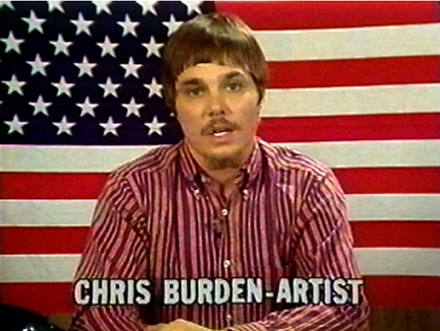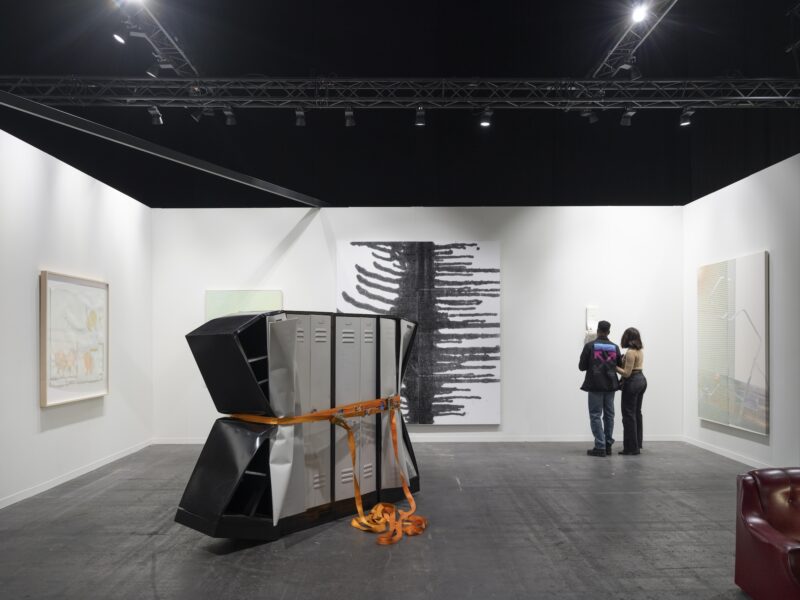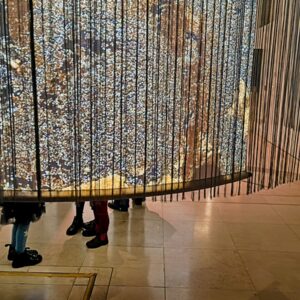Gagosian presents Broadcast: Alternate Meanings in Film and Video, an online exhibition of artists’ films and videos viewable exclusively on gagosian.com. The exhibition is organized into a series of “chapters,” each lasting two weeks. The first chapter begins today, Tuesday, May 19th.

Chris Burden, The TV Commercials, 1973-1977 | 2000, (still) Edited by Peter Kirby, Media Art Services © Chris Burden / licensed by The Chris Burden Estate. Courtesy Electronic Arts Intermix (EAI), New York
Broadcast: Alternate Meanings in Film and Video employs the innate immediacy of time-based art to spark reflection on the here and now, taking the words of famed psychologist and countercultural icon Timothy Leary as its starting point. In the midst of the political tumult of the late 1960s, Leary’s phrase “turn on, tune in, drop out” became a mantra for a generation defined by its upending of convention. In this exhibition, the slogan transcends its original link with the psychedelic experience to address the impulse to find alternative models for life and thought during times of crisis and uncertainty.
The featured works consider alternate meanings of Leary’s words under three distinct headings: “turn on” features films and videos that explore levels of self-awareness; “tune in” comprises works that investigate or dramatize interactions with the external world; and “drop out” describes artistic efforts to enact groundbreaking change.
Some of the featured video works present artistic ruminations on alternative forms of introspection. In Cutaways (2012), Taryn Simon appears to be a wayward test subject, staring silently at her interviewers on the Prime Time Russia news show when, in fact, the sequence was recorded as extra footage to finesse postproduction. Richard Serra’s Hand Catching Lead (1968) records the artist attempting to grasp—and thus modify—pieces of the metal dropped from above.
Other works in the exhibition approach their ostensible subjects through meditations on the moving image as document. To film Domestic (as long as it lasts) (2002), Douglas Gordon kicked a camera around his New York apartment. The resultant kinetic footage, in which the artist’s boot comes in and out of view, deteriorates gradually over the course of fourteen minutes until the camera fails. In Adam McEwen’s four-channel loop Escape from New York (2014) (named for the John Carpenter film), journeys through the city’s Lincoln, Holland, Battery, and Midtown Tunnels end abruptly as each car resurfaces beyond the island of Manhattan. And hinging on the contextual possibilities and oddities of television is Chris Burden’s The TV Commercials 1973–77 (1973–77): in the mid-1970s, Burden aimed to break the medium’s “omnipotent stranglehold of the airwaves” by purchasing commercial spots, which he used to air footage ranging from recordings of his own performance works to sequences that toy with the platform’s characteristic qualities.
Adam McEwen’s Escape from New York is currently installed in the storefront windows of Gagosian Park & 75 in New York.
The exhibition will include works by Chris Burden, Rachel Feinstein, William Forsythe, Theaster Gates, Piero Golia, Douglas Gordon, Damien Hirst and Angus Fairhurst, Carsten Höller, Harmony Korine, Vera Lutter, Man Ray, Adam McEwen, Nam June Paik, Steven Parrino, Sterling Ruby, Ed Ruscha, Richard Serra, Taryn Simon, and others. #GagosianBroadcast







